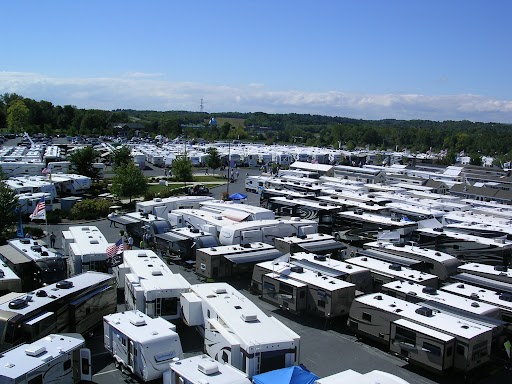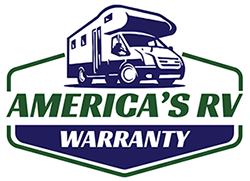
January 1 is sort of like your RV’s birthday. Only with RVs, there isn’t much to celebrate.
This is because on Jan 1 of the new year, your RV model ages one year. For example, a 2019 model goes from being four years old to five years old. And getting older isn’t good for RVs. When your RV ages a year, it is less valuable and likely more prone to breakdowns than one year ago. Every year, purchasing RV warranty coverage gets more expensive, and your coverage options decrease. It’s why the holidays are traditionally a popular time to purchase RV warranty coverage: RVers want to save on their warranty coverage.
Since RV warranties factor the age of the RV into their pricing, that means rates for RV warranties go up on January 1st of each new year.
RV warranty companies often increase rates in general around this time as well. Rates may go up in general as a response to increased demand, inflation, or cost factors like RV mechanics rates. That increase would be in addition to coverage for your specific RV becoming more expensive as it ages.
Additionally, you may have fewer coverage options. For example, in December, your motorhome may be eligible for seven years of warranty coverage. But in January, that is reduced to 6 or 5. So you end up paying more for a shorter coverage period.
If your RV is older, you may not even be eligible for coverage anymore. At America’s RV Warranty, we typically offer some type of warranty coverage for motorhomes until the unit is 20 years old. For towable RVs such as fifth wheels and travel trailers, coverage is available until it is 15 years. For example, a 2008 model-year travel trailer will no longer be eligible for warranty coverage after Dec 31, 2023. Once it turns 15, it becomes ineligible for coverage. Some other companies refuse to cover the older-model RVs that ARW will cover.
RV warranties are more expensive for older RVs because, statistically, older RVs need repairs more often. As an RV ages and has more miles put on it, the likelihood of major breakdowns (and major repairs) increases drastically. Remember, an RV is a house on wheels, so it has both household items and automotive functions.
Those automotive parts wear with time and use. Expensive engine, transmission, and drivetrain repairs become more likely with every mile. Even without added miles and with proper winter storage, the passage of time makes the necessity for expensive repairs more likely.
The coach components of the RV–kitchen appliances, plumbing, electrical, air conditioning, etc.–are also more likely to malfunction over time. Daily use and disuse from storage both take their toll on items like refrigerators, water heaters, and air conditioners. Besides, many of these items were not originally engineered to be placed on a vehicle that goes at high speeds and on bumpy roads. They have a limited lifespan.
As RVs get older, the availability of parts for that particular model declines. When parts aren’t easy to source, they become more expensive. The scarcity can also lead to delays in repair work or extra hours of labor on the repair.
If the end of the year is approaching, the answer is “now.” Because of all the factors that go into the cost of an RV warranty and all the plan options available, most warranty companies cannot simply give you an instant quote online. You can request a quote online, but you’ll have to speak with a salesperson first to receive your quote. This means it may take a day or two at the least to receive a quote for coverage.
Since an RV warranty can be a big decision, you don’t want to rush it. Get a free quote today.
Once you’ve made your quote, you can take time to review information and ask questions. ARW will honor any quotes made towards the end of the year until January 5th of the following year. So if your quote is in place but you’re out of town for New Years, you can sign up afterwards (as long as you don’t wait too long).
Our plans have a few perks that are especially helpful to owners of older RVs. Unlike other companies in the industry, America’s RV Warranty pays the full retail cost of parts, plus a mechanic’s markup of up to 20%. This helps cover the cost of more expensive or hard-to-source parts for a repair. Other companies will pay the cost of a refurbished or used part, and leave the RV owner to pay the difference.
ARW doesn’t require an inspection in order to purchase coverage. This inspection is often used against RV owners later to deny coverage on repairs, plus it’s an unnecessary expense and delay for those who already own their rig.
You can use your RV plan at any RV repair center in the USA or Canada, and you can also take advantage of unbeatable mobile mechanic coverage. Whatever repairs you need, you can use a mobile mechanic for repairs. Plus, we’ll cover the service fee–up to $500!
Our homepage has more great reasons to choose America’s RV Warranty, along with FAQs and other essential information.
RV insurance rates may go up at the beginning of the year, but not because your RV is considered a year older. Industry-wide, you can expect rates to go up year-over-year as insurance carriers see costs or demand rise. In any case, rates are unlikely to go down.
Unlike RV warranty costs, RV insurance rates are adjusted annually or semiannually. When you purchase an RV warranty, the cost of the plan is decided upfront, as is the length of the coverage term. So locking in your RV warranty rate is important. After all, you can (and should) shop your RV insurance rates every year. Whether you have homeowners insurance, auto insurance, or just an RV policy, it never hurts to see if there isn’t a cheaper option out.
